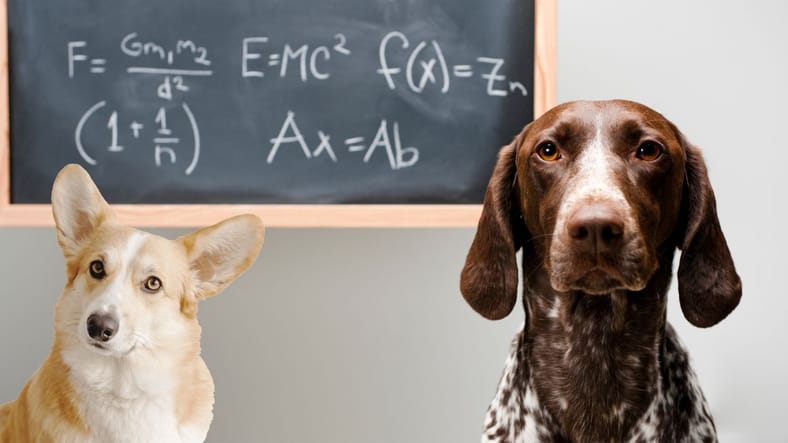Are Dogs Really as Smart as 2-Year-Old Humans?
Dogs have spent thousands of years evolving alongside us—and thanks to natural selection and selective breeding, they’ve become pros at reading our emotions. A slight change in our tone, a raised eyebrow, even the way we reach for our keys—your dog notices it all.
But here’s the twist: while dogs are experts at decoding us, we’re pretty clueless when it comes to understanding them.

Most of us assume we know what our dogs are thinking, but that’s often wishful thinking. We tend to project human thoughts and emotions onto them (ever catch yourself saying “he feels guilty”?), which can lead to totally wrong interpretations.
Humans zoom out and see the whole picture—dogs zoom in on the tiny details of our behavior. That’s why they’re better at understanding us than we are at understanding them.
So, what is your dog really thinking about, and how can you stop guessing and start actually understanding what your dog is feeling?
How Smart Are Dogs?

It is difficult to qualify canine intelligence in a way that is understandable without comparing it directly to human intelligence. Many experts agree that most domestic dogs have the cognitive abilities of a 2 to 2.5-year-old human child.
Just like your average 2-year-old, dogs can do some pretty impressive mental gymnastics. They notice when things change, like when you put on your shoes, and they understand simple gestures like pointing. They feel basic emotions like joy, fear, sadness, and surprise, but don’t expect them to grasp complex feelings like guilt or shame (even if they look guilty—more on that later).
Dogs, like toddlers, are little learning machines. They pick up new things through association and clever deduction. In fact, some dogs can figure out what a brand-new word means just by ruling out what it can’t mean. It’s not magic—it’s dog smarts.
Like human babies, dogs are born with the ability to read human expression and behavior, an ability that “not even our closest living relative, the great apes, have,” according to Vanessa Woods, director of the Puppy Kindergarten project at Duke University, in an interview with The Guardian.

When it comes to memory, dogs actually leave 2-year-old humans in the dust. They can remember experiences—and even words—they learned years ago. Some dogs have vocabularies of over 1,000 unique words, and they don’t forget who gave them the tastiest snacks or where that one squirrel lives.
But let’s not hand out doggy diplomas just yet.
Dogs aren’t technical geniuses—they’re just really, really good at reading us. They tune into our tone, body language, and routines so well that it feels like they understand every word. And with those expressive faces? It’s no wonder we think they feel guilty or embarrassed, when they’re probably just nervous or confused.
Dogs are smart, no doubt. But they’re not pondering the meaning of life—they’re probably just wondering if it’s time for dinner.
Decoding Your Dog’s Thoughts

Even if you think you’re fluent in dog, chances are your human brain is still getting in the way. Most of us read our dogs like we’d read another person—zooming out, looking at the big picture, and assuming we know what’s going on. But to really understand your dog, you’ve got to ditch the human filter and focus on what they’re actually doing.
Take the classic “guilty dog” face. You come home, see the shredded couch cushion, and your pup looks like they’re about to start apologizing in English. But are they really feeling guilty? Not likely.
“When you yell at your dog for doing something bad and she makes that guilty face, is it really because she is guilty, or is it because she is scared you are going to reprimand her more?” asks Holly Molinaro, animal welfare scientist and PhD student at Arizona State University, in an interview with ASU News.
Guilt requires understanding rules and social norms—things dogs simply don’t grasp. What they do understand is tone, posture, and the look on your face. They’re not confessing; they’re reacting.
And no, your dog isn’t ignoring you to be a little rebel. If they’re not listening, it’s usually because they’re distracted, not because they’re plotting against you.
The key? Stop reading the room. Start reading the dog. That shift in perspective can change everything about how you connect with your canine co-pilot.




